Xantus’s Hummingbird (Basilinna xantusii), a jewel of the Baja California Peninsula, is a mesmerizing avian species that enchants with its vibrant plumage and unique characteristics.
Named after the Hungarian ornithologist John Xantus, who first documented the species in the 19th century, this hummingbird stands as a testament to the biodiversity thriving in the region.
Renowned for its striking emerald green and fiery red-orange hues, Xantus’s Hummingbird graces arid and subtropical habitats, displaying agility and territorial prowess.
Its specialized bill and forked tail reflect evolutionary adaptations for nectar feeding and intricate flight maneuvers.
Endemic to the Baja California region, this species is a testament to the intricate ecological tapestry woven across its native landscapes.
As a symbol of both natural beauty and scientific discovery, Xantus’s Hummingbird invites us to explore and appreciate the wonders of its unique existence. Stay focused.
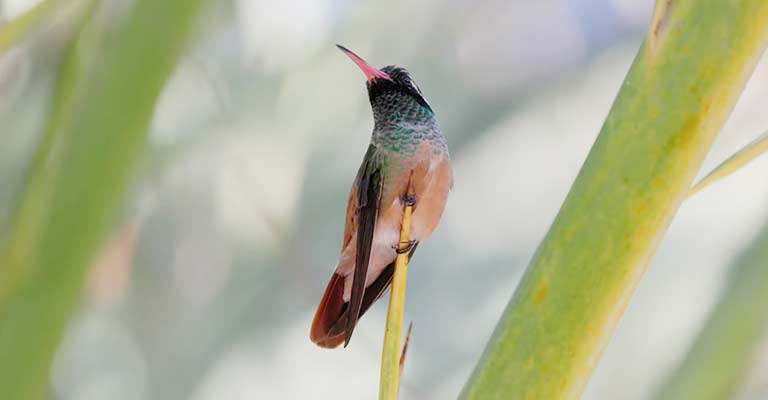
Identifying Characteristics of Xantus’s Hummingbird
Identifying Xantus’s Hummingbird (Basilinna xantusii) requires a keen eye and an appreciation for the distinctive features that set this species apart in the realm of hummingbirds.
Here are some key characteristics that aid in the accurate identification of Xantus’s Hummingbird:
Vibrant Plumage
One of the most striking features of Xantus’s Hummingbird is its vibrant and iridescent plumage.
The male exhibits a dazzling combination of emerald green on its upperparts, a deep blue throat, and a fiery red-orange patch on its chest.
In contrast, the female tends to have a more subdued coloration with green and grayish tones, allowing for easy differentiation between the sexes.
Distinctive Bill Shape
Xantus’s Hummingbird possesses a uniquely shaped bill, featuring a slightly decurved structure.
This adaptation is ideal for reaching deep into tubular flowers to extract nectar, showcasing the bird’s specialized feeding habits.
Size and Shape
Measuring approximately 3.5 inches in length, Xantus’s Hummingbird is a small species with a slender and streamlined body. Its wings are relatively short, contributing to its agile and rapid flight patterns.
Tail Design
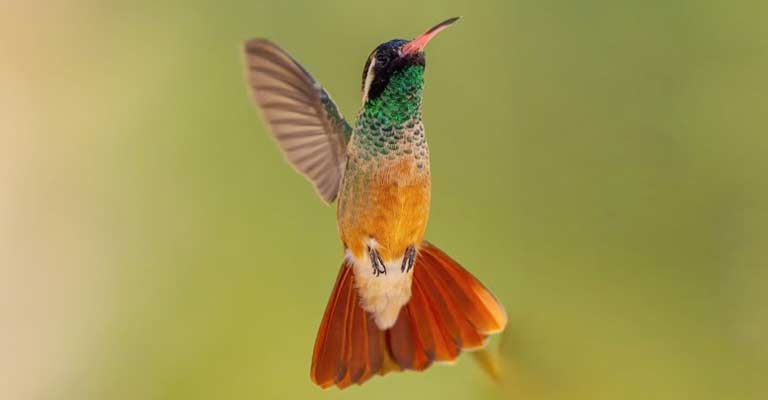
The tail of Xantus’s Hummingbird is noteworthy for its forked appearance, with the outermost feathers extending beyond the central ones.
This distinctive tail shape aids in mid-air stabilization and control during intricate flight maneuvers.
Habitat Preference
Identifying this hummingbird often involves considering its habitat. Xantus’s Hummingbirds are primarily found in arid and subtropical regions, favoring coastal shrublands, thorn forests, and wooded areas.
Observing their presence in these specific ecosystems aids in accurate identification.
Territorial Behavior
Xantus’s Hummingbirds are known for their territorial nature. Identifying them involves observing aggressive behavior, as they fiercely defend their feeding territories from intruders.
This territoriality is often manifested through rapid aerial chases and vocalizations.
Distinctive Vocalizations
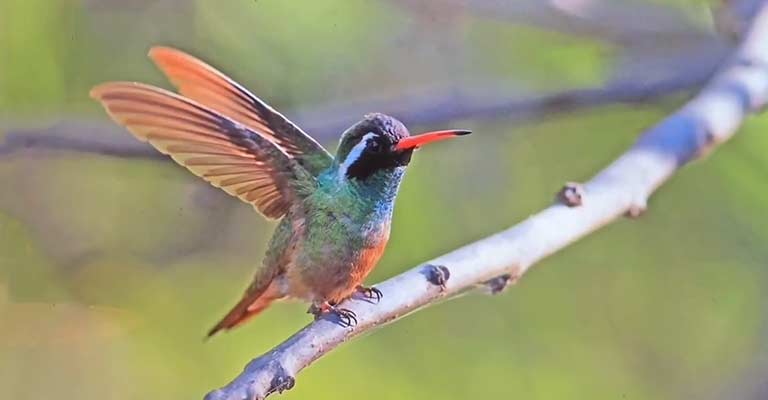
Recognizing the unique vocalizations of Xantus’s Hummingbird adds an auditory dimension to identification.
Their vocal repertoire includes sharp, high-pitched calls that may vary between males and females, contributing to the overall identification process.
Range and Distribution
Understanding the geographical range of Xantus’s Hummingbird is crucial for identification. Endemic to the Baja California Peninsula, their presence in this specific region distinguishes them from other hummingbird species.
Observers can consult range maps and distribution guides to enhance the accuracy of identification.
Identifying Xantus’s Hummingbird requires a holistic approach, considering a combination of visual, behavioral, and environmental cues.
By focusing on these eight key characteristics, enthusiasts and ornithologists alike can develop a comprehensive understanding of this remarkable hummingbird species.
Taxonomy of Xantus’s Hummingbird
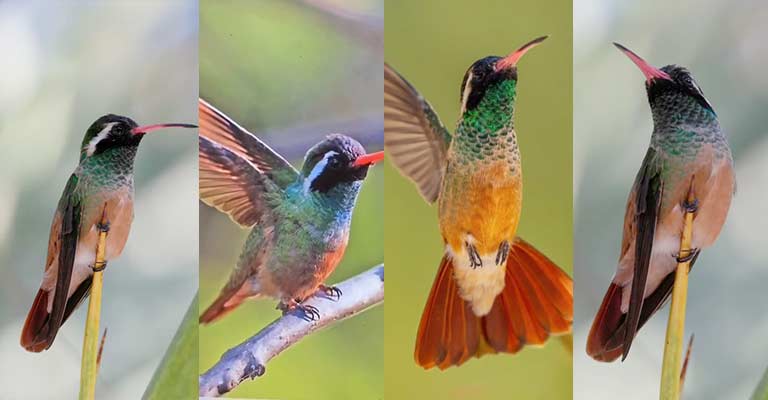
Here’s a table summarizing the taxonomy details of Xantus’s Hummingbird:
| Taxonomic Level | Classification |
| Domain | Eukaryota |
| Kingdom | Animalia |
| Phylum | Chordata |
| Class | Aves |
| Clade | Strisores |
| Order | Apodiformes |
| Family | Trochilidae |
| Genus | Basilinna |
| Species | B. xantusii |
This hierarchical classification system provides a systematic understanding of the evolutionary relationships and taxonomic placement of Xantus’s Hummingbird within the broader context of living organisms.
Xantus’s Hummingbird (Basilinna xantusii) belongs to the Animalia kingdom, Chordata phylum, and Aves class.
As a member of the Strisores clade, it is classified under the Apodiformes order and Trochilidae family, aligning it with hummingbirds. The genus designation is Basilinna, while the specific epithet is xantusii.
This taxonomy places Xantus’s Hummingbird in the intricate tapestry of avian diversity, emphasizing its evolutionary connections within the broader classification of life.
Xantus’s Hummingbird Life History
Xantus’s Hummingbird (Basilinna xantusii) unveils a captivating life history, rich in ecological intricacies and behavioral adaptations.
This diminutive hummingbird, named after the Hungarian ornithologist John Xantus, is indigenous to the Baja California Peninsula, where its life unfolds amidst diverse landscapes.
Delving into its life history provides a comprehensive view of its survival strategies, reproductive behaviors, and the conservation challenges it faces.
Food
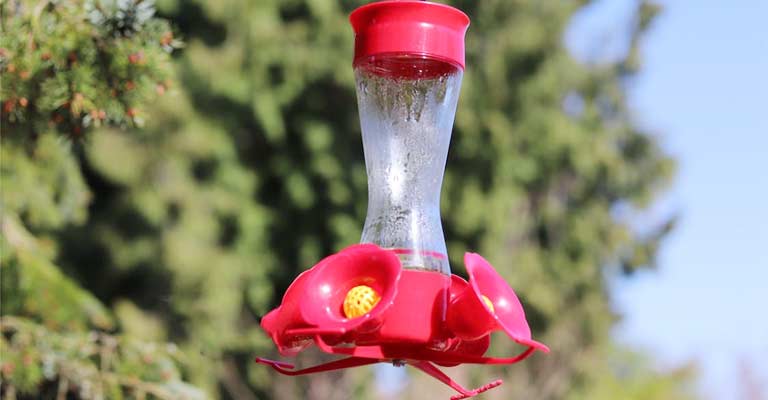
A primary component of the Xantus’s Hummingbird’s life history revolves around its feeding habits. These avian gems predominantly sustain themselves on nectar extracted from a myriad of flowering plants.
Their specialized bills, slightly decurved for efficient nectar extraction, showcase a coevolutionary relationship with the floral resources of their habitat.
While nectar serves as the primary energy source, these hummingbirds also supplement their diet with small insects and spiders, contributing essential proteins to their nutrition.
Habitat
Xantus’s Hummingbirds exhibit a strong affinity for arid and subtropical environments. Their habitats include coastal shrublands, thorn forests, and wooded areas within the Baja California region.
This specific ecological niche offers a mosaic of flowering plants, ensuring a year-round supply of nectar, a crucial factor in their survival.
Range Map
A crucial aspect of the life history involves understanding the species’ distribution. Consulting a range map is instrumental in recognizing the specific regions where Xantus’s Hummingbirds thrive.
Endemic to the Baja California Peninsula, this map aids researchers, conservationists, and enthusiasts in tracking population dynamics and implementing targeted conservation efforts.
Nesting and Breeding
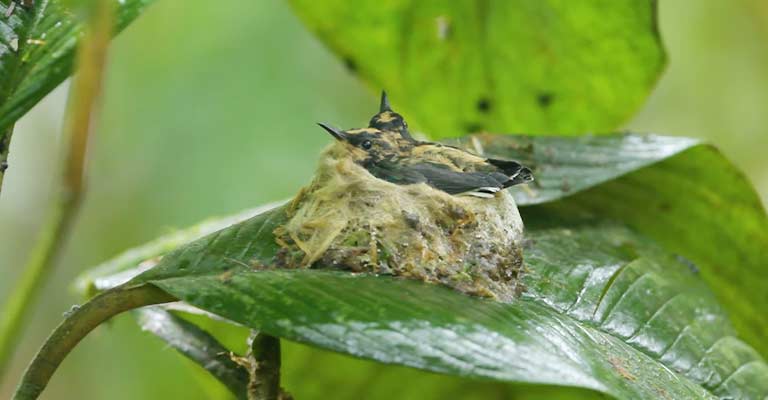
Nesting behavior is a pivotal chapter in the life history of Xantus’s Hummingbird.
Females meticulously craft cup-shaped nests using plant fibers, spider silk, and lichens, often securing them on horizontal branches.
Breeding season, typically from spring to early summer, witnesses intricate courtship displays, with males showcasing their vibrant plumage and engaging in aerial acrobatics.
After successful mating, the female lays one to three eggs, initiating a meticulous incubation period.
Here’s a table summarizing the nesting details of Xantus’s Hummingbird:
| Nesting Details | Facts |
| Clutch Size | 1 to 3 eggs |
| Number of Broods | Usually 1 per breeding season |
| Egg Length | Approximately 1.0 cm (0.4 in) |
| Egg Width | Approximately 0.6 cm (0.2 in) |
| Incubation Period | 14 to 18 days |
| Nestling Period | About 20 days |
| Egg Description | White, elliptical shape with a slight point at one end |
| Nest Construction | Cup-shaped, made of plant fibers, spider silk, and lichens, often placed on horizontal branches |
| Nest Height | Typically 1 to 4 meters above the ground |
| Parental Involvement | Female handles incubation, both parents feed and care for the nestlings |
| Fledgling Appearance | Resemble adults but may have slightly less vibrant plumage |
| Nest Reuse | Occasionally reuse old nests or build new ones for subsequent broods |
Understanding these nesting details provides valuable insights into the reproductive biology and parental care behaviors of Xantus’s Hummingbird, contributing to the broader comprehension of its life history.
Diseases and Treatment
Like all wildlife, Xantus’s Hummingbirds are susceptible to various diseases. Avian pox and fungal infections are notable concerns. Conservation efforts often involve monitoring and addressing disease outbreaks.
Treatment strategies may include quarantine, medical intervention, and habitat management to mitigate disease transmission.
Conservation
The conservation aspect of Xantus’s Hummingbird’s life history underscores the importance of protecting its natural habitat.
Anthropogenic threats such as habitat loss, climate change, and pesticide exposure necessitate robust conservation measures.
Initiatives focusing on habitat preservation, public awareness, and research contribute to safeguarding the species and its delicate ecosystem.
The life history of Xantus’s Hummingbird is a tapestry woven with adaptations to its unique environment.
From foraging strategies and nesting behaviors to the challenges of diseases and conservation, understanding the intricacies of its life provides a foundation for informed conservation efforts and a deeper appreciation of this remarkable avian species.
10 Fun Facts About Xantus’s Hummingbird
Xantus’s Hummingbird (Basilinna xantusii) is a fascinating species that captivates enthusiasts with its unique characteristics and behaviors. Here are 10 fun facts about these captivating hummingbirds:
- Endemic Elegance: Xantus’s Hummingbird is endemic to the Baja California Peninsula, making it a true gem of the region’s avian biodiversity.
- Jewel-Toned Plumage: The males boast a dazzling display of colors, including emerald green, deep blue throat, and a fiery red-orange patch on the chest. This vibrant plumage is a visual spectacle.
- Territorial Guardians: These hummingbirds are fiercely territorial, engaging in acrobatic aerial displays to defend their feeding territories from intruders.
- Specialized Bills: Their bills are uniquely shaped with a slight curve, allowing them to access nectar deep within tubular flowers, showcasing a specialized adaptation for their feeding habits.
- Forked Tail Finery: Xantus’s Hummingbird sports a distinctive forked tail, contributing to its agile flight and providing an elegant touch to its appearance.
- Nesting Heights: Nests are constructed at varying heights, typically between 1 to 4 meters above the ground, showcasing adaptability to different environmental conditions.
- One Brood Wonder: While some hummingbirds may have multiple broods in a breeding season, Xantus’s Hummingbird usually sticks to a single brood per season.
- Vocal Prowess: Their vocalizations include sharp and high-pitched calls, which are part of their communication repertoire and add an auditory dimension to their vibrant presence.
- Altitudinal Explorers: Xantus’s Hummingbirds are known to inhabit a range of altitudes within their habitat, from coastal areas to slightly elevated terrains, displaying adaptability to diverse environmental conditions.
- Conservation Concerns: Despite their enchanting presence, Xantus’s Hummingbirds face conservation challenges due to habitat loss and climate change, emphasizing the need for concerted efforts to protect their unique ecosystem.
Xantus’s Hummingbird is not merely a visually stunning bird but also a species with intricate behaviors and ecological significance.
These fun facts offer a glimpse into the remarkable world of this hummingbird, underscoring the importance of appreciating and conserving the biodiversity that graces the Baja California Peninsula.
Wrapping Up
In the exploration of Xantus’s Hummingbird, we unveil a creature intricately woven into the ecological fabric of the Baja California Peninsula.
Its vibrant plumage, territorial nature, and unique adaptations, from specialized bills to forked tails, showcase a species finely attuned to its environment.
From nesting behaviors to conservation challenges, each facet of its life history unravels a tale of resilience and adaptation.
As stewards of the natural world, understanding and safeguarding the future of Xantus’s Hummingbird necessitates a commitment to preserving the delicate ecosystems it calls home. Best wishes.